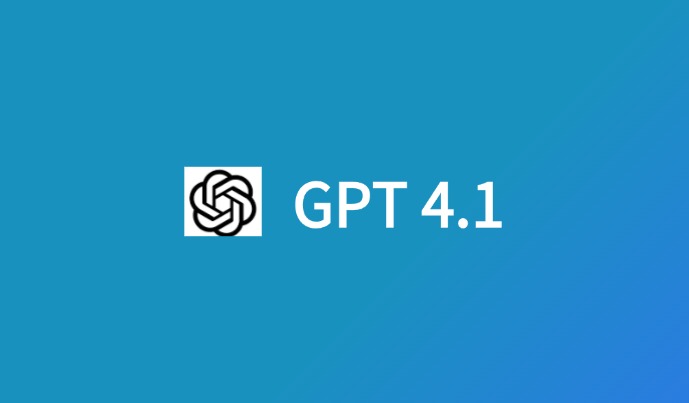A medida que el volumen de artículos de investigación sigue creciendo, resumirlos de manera eficaz se convierte en una habilidad esencial. Las herramientas de IA en 2025 están transformando la forma en que los investigadores y profesionales abordan esta tarea. Si bien los resumidores de IA basados en texto se destacan por condensar contenido escrito, la integración de estas herramientas con tecnologías multimodales, como Resumen de imágenes con inteligencia artificial de iWeaver—mejora el proceso general de resumen, especialmente cuando se trata de investigaciones que incluyen elementos visuales críticos como imágenes, gráficos y diagramas.
Por qué es importante resumir los trabajos de investigación
Resumir artículos de investigación sigue siendo vital para:
- Ahorro de tiempo:Captar de manera eficiente los hallazgos fundamentales.
- Mejora de la toma de decisiones:Céntrese en las conclusiones y datos clave.
- Mejor comprensión:Ayuda a los usuarios sin conocimientos especializados a comprender material complejo.
- Accesibilidad:Simplifica el intercambio de resultados de investigaciones complejas.
La incorporación de herramientas que manejan tanto texto como imágenes garantiza que los resúmenes sean más integrales e informativos.
Las 5 mejores herramientas de inteligencia artificial para resumir artículos de investigación en 2025
- ResumenAI
- Características:Resumen de texto rápido y multilingüe.
- Ventajas:Eficiente, preciso, compatible con más de 25 idiomas.
- Contras:Versión gratuita limitada, puede perder detalles en documentos altamente técnicos.
- Sintetización AI
- Características:PNL avanzado para texto y resúmenes personalizables.
- Ventajas:Análisis profundo, ideal para investigación interdisciplinaria.
- Contras:Planes premium costosos, requiere internet potente.
- Suma académica
- Características:Se centra en artículos académicos con soporte de citas.
- Ventajas:Resúmenes detallados con citas.
- Contras:Procesamiento lento para archivos grandes, limitaciones de la versión gratuita.
- Resumen rápido
- Características:Resumen con un solo clic con una interfaz sencilla.
- Ventajas:Extremadamente rápido, fácil de usar, admite varios tipos de archivos.
- Contras:Carece de profundidad para temas específicos y puede simplificar demasiado.
- Resumidor de papel con inteligencia artificial
- Características:Resúmenes personalizables con funciones colaborativas.
- Ventajas:Versátil, longitud y profundidad personalizables.
- Contras:Requiere ajustes manuales para el contenido técnico.
Resumen multimodal mejorado con el resumen de imágenes con inteligencia artificial de iWeaver
Si bien las herramientas de resumen de texto se han vuelto bastante eficaces para condensar artículos de investigación, los datos visuales suelen desempeñar un papel fundamental en los trabajos académicos. Las imágenes, los diagramas y los gráficos suelen contener información vital que requiere atención especializada. Resumen de imágenes con inteligencia artificial de iWeaver complementa estas herramientas procesando contenido visual, lo que lo convierte en un complemento esencial para los investigadores que trabajan con conjuntos de datos e ilustraciones complejos.
Beneficios clave de la integración del resumen de imágenes con IA de iWeaver
- Resumen multimodal mejorado El resumen de imágenes con IA de iWeaver extrae información clave de elementos visuales como gráficos y diagramas. Este enfoque dual —que resume texto e imágenes— proporciona un resumen más completo y completo, garantizando que no se pase por alto ningún dato importante, ya sea textual o visual.
- Comprensión contextual mejorada A menudo, los artículos de investigación incluyen imágenes para respaldar las explicaciones textuales. La combinación de los resúmenes visuales de iWeaver con herramientas de inteligencia artificial basadas en texto ofrece una comprensión contextual completa, lo que garantiza que los resúmenes capturen tanto los aspectos escritos como los visuales del artículo.
- Proceso de investigación optimizado En lugar de analizar manualmente los cuadros y gráficos, los investigadores pueden utilizar el resumidor de imágenes de iWeaver para interpretar de forma eficiente los datos visuales, mientras que un resumidor de texto condensa el contenido escrito. Este enfoque acelera el proceso de investigación, especialmente cuando los documentos contienen una gran cantidad de datos o incluyen numerosos componentes visuales.
- Cómo crear resúmenes más completos y accesibles La combinación de resumen de texto e imágenes da como resultado un informe de resumen dinámico y de múltiples capas. Esto hace que los hallazgos del artículo sean más digeribles y accesibles, especialmente para aquellos que no están familiarizados con datos visuales complejos. Por ejemplo, el resumidor de imágenes puede desglosar gráficos complejos, mientras que el resumidor de texto maneja la metodología y las conclusiones.
Caso práctico de integración: un estudio de caso de investigación con gráficos
Imagínese trabajar con un trabajo de investigación que contiene un análisis estadístico complejo a través de gráficos. Resumen de imágenes con inteligencia artificial de iWeaver, puede hacer que los gráficos se describan en términos simples (por ejemplo, identificando tendencias, correlaciones, etc.). Al mismo tiempo, un resumidor basado en texto Proporcionará un resumen conciso de la metodología, los hallazgos y las conclusiones. Juntas, estas herramientas crean un resumen equilibrado que cubre tanto el texto como los componentes visuales del artículo, lo que garantiza que capte el contexto y el significado completos de la investigación.
Cómo integrar herramientas de resumen de texto e imágenes:
- Paso 1:Utilice un resumidor de inteligencia artificial basado en texto para condensar los hallazgos, la metodología y las conclusiones clave.
- Paso 2: Aplicar Resumen de imágenes con inteligencia artificial de iWeaver analizar y describir el contenido visual (por ejemplo, gráficos, tablas e imágenes).
- Paso 3: Combine resúmenes de texto e imágenes en un informe unificado y fácil de entender. Esto da como resultado un resumen integral y multidimensional que incluye datos escritos y visuales.
Conclusión
La combinación de Resumen de imágenes con inteligencia artificial de iWeaver con herramientas avanzadas de resumen de texto como ResumenAI, Sintetización AI, y otros crean una solución poderosa y holística para resumir artículos de investigación. Los investigadores ahora tienen la capacidad de procesar de manera rápida y precisa tanto los aspectos textuales como los visuales de un artículo, lo que permite una comprensión más profunda y eficiente de investigaciones complejas. Este enfoque multimodal representa el futuro de los resúmenes de investigación impulsados por IA en 2025, lo que facilita la extracción de información significativa de un cuerpo creciente de literatura académica.



